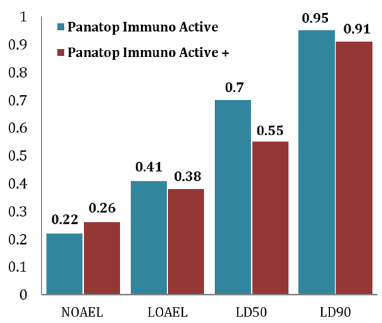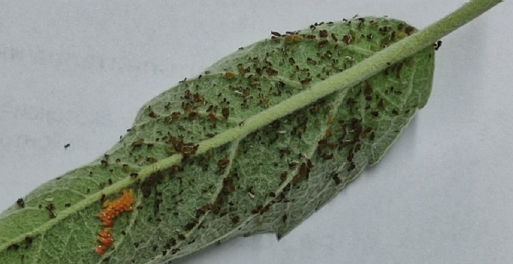

Document Type : Original Article
Author
Agricultural University of Plovdiv, Plovdiv, Bulgaria
Abstract
Keywords
The fact that some mineral-based or organic fertilizers can manifest insecticidal activity is not new or unique. For example, in 1984 synergist insecticidal activity of urea and ammonium nitrate against Tribolium confusm was established [1]. Researches claim that rock meal mechanically blocks the airflow in insects’ spiracles, making it impossible to breathe [2]. High fertilizer application rates were proven to influence bollworm (Helicoverpa zea) and certain insect predators [3]. Phosphorus– potassium– and nitrogen-containing liquid suspension also showed a strong insecticidal activity [4].
Rock meals are essential mineral-based fertilizers and soil amendments in sustainable and organic agricultural production systems [5-8]. Its main effects are represented by improving the texture of clay soils by adding rock dust powder in various amounts [9] and as a soil re-mineralizer [10] with other side pesticidal benefits. The application of granite rock dust resulted in lower herbivore damage on Lily plants [11]. The effectiveness of clinoptilolite (a naturally occurring zeolite) treatment was investigated in search of organic and integrated pest management (IPM) compatable control method against pollen beetle Meligethes spp in oilseed fields. The results showed that clinoptilolite treatment resulted in a significant reduction (50-80%) in the number of pollen beetles under dry and sunny conditions [12]. The insecticidal effect of different formulations of granite dust against Plutella xylostella and Trichoplusia ni exceeded other mineral-based and dust-based pest management products [13]. Basalt rock dust was also reported as an insecticide in organic peach production systems [14][15]. Furthermore, rock dust showed considerable effectiveness against tomato spotted spider mites when used in soil or as a foliar application [16][17]. Rock dust nanoparticles were established to improve seed germination and seedling vigor of native species [18].
The presented introduction clearly shows that rock meals or dust have a long proven record of insecticidal action towards different pest species. Therefore, the present research aimed to examine the eventual in vitro and in vivo effectiveness of the mineral-based fertilizers on the base of rock meal towards one of the most spread and harmful aphid species on apples – Aphis pomi.
Four mineral fertilizers produced by Panamin Asutria [19] were used in the present study on the base of rock meal mixtures and different mineral substances, with major components (calcium, magnesium, and silicon) and additional elements such as iron, phosphates, and potassium. The same products are also used as dietary supplements in animal feeding [20]:
Aphis pomi individuals were obtained from infested apple orchard trees and used in the current study. in vitro trials were conducted firstly to investigate the eventual insecticidal activity of the tested products. The trials were conducted according to [21]. Five layers of standard filter paper were put on the bottom plastic cups with a volume of 400 ml. 5 ml of testing product in 10 different concentrations was poured to wet the paper layers in each cup. After that, 10 adult aphids were placed on the wetted paper. In control, the test products were substituted with 5 ml of distilled water was used. The cups were covered with greenhouse antiinsect mesh tightening to the cups with rubber bands. Each treatment at each concentration was replicated five times (5 cups). The mortality rates were reported and calculated after 24 and 48 h with Abbot formula [22]. After conducting in vitro trials, in vivo tests with tested products were performed. The LD90 concentration of in vitro tests for each effective product was sprayed on apple orchard trees from different varieties infected with Aphis pomi. During these trials, plants were also observed for phytotoxic manifestations [23-25].
The Dose-Response modeling for establishing NOAEL (No Observed Adverse Effect Level =LD05), LOAEL (Lowest Observed Adverse Effect Level = LD25), LD50, and LD90 [26]was performed with R language for Statistical Computing and DRC package [27-29].
in vitro and in vivo trials results reveal that two of the tested products (Panatop Immuno Active and Panatop Immuno Active+) expressed strong insecticidal activity towards aphid species. The Dose-Response Models (Curves) shows that LD50 was established under concentrations of 0.7 and 0.55% (v/v), while LD90 was established under concentrations of 0.95 and 0.91% (v/v) of Immuno Active and Immuno Active+, respectively (Fig. 1 A and B) and (Fig. 2). Two of the tested products: Panamin Agro and Panatop Immuno Save did not express any insecticidal activity even at tenfold higher rates than recommended on their labels as fertilizers.


In vivo trials revealed an absolute insecticidal activity of both Panamin Immuno Active and Panatop Immuno Active+ on Aphis pomi. Treatments with 1 % (v/v) concentration resulted in total elimination of aphids on apples as a contact insecticide without any phytotoxic damages on plants (Fig. 3).

The recommended concentration of Panatop Immuno Active and Panatop Immuno Active + as plant stimulants and fertilizers is also 1 % (v/v). The presented results show that the tested products (Panatop Immuno Active and Panatop Immuno Active + ) express their full insecticidal potential against aphids at this concentration. The used products have similar insecticidal effectiveness to most commercially available insecticides (Fig. 3). No phytotoxic manifestations were observed during the experiment in all tested varieties of apple trees, even when they were tested at tenfold higher rates than recommended convention on their labels as fertilizers (1 % v/v). This finding highlights the safeness of this control method on the plant in agricultural production systems as similarly reported previously using other similar materials [5-8][11-18]. The main insecticidal effect of the reported products is mechanical [2]. Therefore, the main disadvantage of its mode of action is the lack of systemic insecticidal activity. However, this disadvantage might be compensated for by these products’ capability of inducing biotic and abiotic stress resistance in the plant [30][31].
The present study reveals that Panatop Immuno Active and Panatop Immuno Active+ can act as a contact insecticide towards aphids in the same doses in which they are applied as fertilizers and plant stimulators [ 1 % (v/v)]. This application can provide simultaneous protection of the plants combined with a growth boost. The other advantages of this treatment are the low risk of resistance development, the complete lack of phytotoxicity in treated plants, the induced plant biotic and abiotic resistance, and its safeness for humans and the environment.
This research was conducted under project KP-06-IP-China/2: “Research on sustainable pest and disease management in apple orchards in Bulgaria and China based on precision ecological control methods” between Agricultural University Plovdiv, Bulgaria and Zhengzhou Fruit Research Institute, China.
Conflict of interest statement
Download the disclosure form submitted by the author.
Funding statement
The author and respectively Agricultural University – Plovdiv received a grant from Panamin Co Ltd (The Representative for Bulgaria, North Macedonia, Greece, Turkey, and Romania of Panamin GmbH Austria) for the evaluation of ISR elicitor activity of the company's products, including those presented in the current paper.
Data availability statement
The author declared that all related data are included in the article.